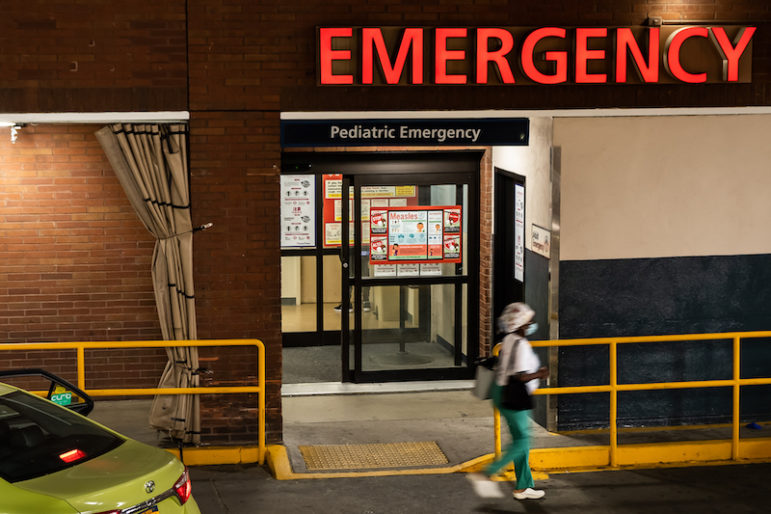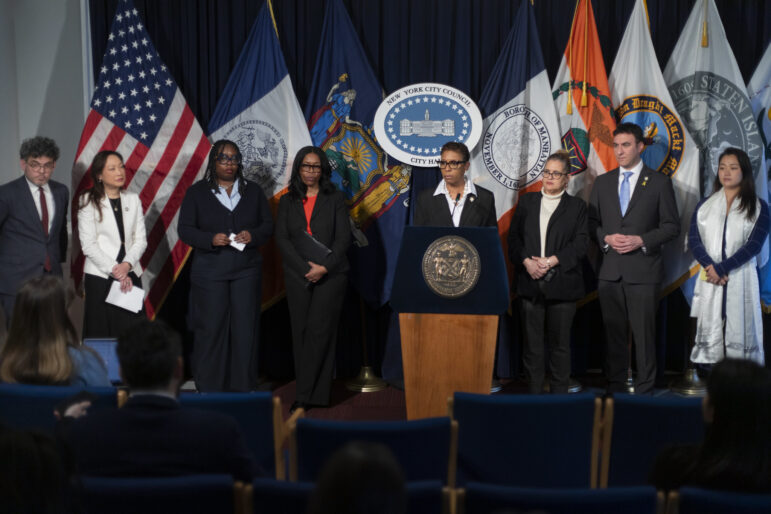
J. Murphy
Asleep in the 205th Street-Norwood station. Not an ideal place for a snooze, but probably not a spot that would have been chosen by anyone with better options.
New York Police Department Commissioner William Bratton said Wednesday that the police will wake up people sleeping on the subway, as they’re subject to about half the crime on the trains. Warning about possible robbery or sexual assault, he asked, “Why put yourself in that risk?” (One reporter says the policy isn’t new.)
That statement recalls Bratton’s policy, announced last October, to keep homeless people from sleeping on the trains. “Subways are not for sleeping, and I wish we could have people understand that,” the commissioner said. (He spoke similarly when he headed the Transit Police in 1991.)
For the data-driven cops, the policies make sense: they’ll lower crime on the subway. For most of us, they make sense too: It’s best to remain alert (though some working double shifts do nap).
But Bratton’s words suggest a huge gap—in both policy and empathy—between a mayoral administration looking for results and the cruel predicament faced by many of New York’s homeless people. Without improved services for the homeless, law enforcement won’t work.
Consider: Many of those sleeping on the F train have grimly concluded that the subway, however noisy, cold, and dangerous, is superior to city-run or city-contracted shelters. Indeed, according to both anecdotal and official reports, many shelters are in poor condition and jeopardize people’s physical safety and the security of their possessions.
Indeed, I have a homeless friend who, after visiting the perilous men’s shelter at Crown Heights armory, chose to stay away. (Conditions may not have improved there since this 2002 report.) Since then he has been robbed on the subway (as well as in a park). He gets three or four hours of sleep a night on the subway and is perpetually exhausted, which makes it ever more difficult for him to rebuild his life.
The subway is hardly an inviting place to sleep sitting up. Beyond the challenges of noise, weather, and safety, those spending the night must sometimes contend with loud revelers or mentally disturbed people, sudden vomit or foul hygiene.
Sleep time comes well past 1 am, when the trains quiet down, while reveille arrives promptly with the 5 am commute, unless cops or transit workers intervene earlier.
The conventional wisdom gets complicated when we consider two other efforts to enforce public standards. It’s a crime for subway passengers to put their feet up on a seat–though irregular enforcement may be driven more by police quotas than legitimate instances of interference with commuters.
My friend has been arrested on the train even after putting his backpack on a seat, then his feet. Similarly, in public atriums and even offices of social service providers, rules forbid visitors to rest their feet on another chair.
While such policies are understandable, consider those who sleep on the train. They almost never get horizontal, at least not until warmer weather makes parks more inviting.
That means many homeless people have terribly swollen feet and legs. While this is apparently common among the homeless—and identified as long ago as a February 1990 New York Times article—we don’t hear solutions from policymakers (or advocacy groups) about where homeless people can elevate their legs. Instead, they wind up in the emergency room.
Finally, consider the debate over decriminalizing public urination, which the City Council has proposed, part of a package reforming penalties for quality-of-life crimes. Some elected officials say it should remain a crime rather than let the police use their discretion.
Yes, public urination is quite unpleasant, especially so when those peeing have options, such as barflies who should have used the facilities before they left.
Where does this leave the homeless? During the day, they can visit libraries, malls, or retail outlets. (My friend has a recreation center membership.) The transit system has some public toilets. In the evening, the options narrow. A few kindhearted guards and buildings services personnel—surely violating the rules—let homeless people use bathrooms.
But the subway closes its public toilets overnight, and so do retail outlets. If some homeless people violate the law, what are their alternatives? In New York City, dogs urinate on the curb with impunity. (I don’t like that either.) If a homeless person does it, we’re mortally offended.
Shouldn’t we be more offended at the absence of public toilets (San Francisco may have a solution) and a safe place to sleep? “Subways are not homeless shelters,” Bratton said last October. He’s right. But law enforcement can’t solve homelessness. The systemic reforms pledged by the city and state can’t happen soon enough.








